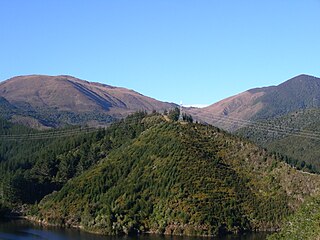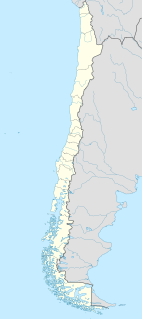 W
WOphiolites are sequences of mafic to ultramafic rock generally believed to represent ancient oceanic lithosphere. They are distributed all across the world being all of them located at present or past orogenic belts, sites of mountain building processes.
 W
WThe Dun Mountain-Maitai Terrane comprises the Dun Mountain Ophiolite Belt, Maitai Group and Patuki Mélange. The Dun Mountain Ophiolite is an ophiolite of Permian age located in New Zealand's South Island. Prehistorically this ophiolite was quarried by Māori for both metasomatized argillite and pounamu (jade) which was used in the production of tools and jewellery.
 W
WThe Jormua Ophiolite is a remnant of ancient oceanic lithosphere near the village of Jormua close to the geographical centre of Finland. The rocks of the Jormua Ophiolite formed about 1,950 million years ago in the Paleoproteozoic Era. The conditions under which the ocean crust rocks of Jormua formed was likely similar to present-day Red Sea. Thus, a linear sea of this type is thought to have existed between two continental landmasses in Finland. At some point this sea closed and the ophiolite was obducted.
 W
WThe Lizard Complex, Cornwall is generally accepted to represent a preserved example of an exposed ophiolite complex in the United Kingdom. The rocks found in The Lizard area are analogous to those found in such famous areas as the Troodos Mountains, Cyprus and the Semail Ophiolite, Oman.
 W
WAn ophiolite is a section of Earth's oceanic crust and the underlying upper mantle that has been uplifted and exposed above sea level and often emplaced onto continental crustal rocks.
 W
WThe Rocas Verdes ophiolites are a series of greenschists and other rocks constituting ophiolites in Magallanes Region, southernmost Chile. The Rocas Verdes ophiolites represent the continental-oceanic crust that existed in a back-arc basin in the Mesozoic Era as result of extensional tectonics. This back-arc basin then evolved into the Magallanes foreland basin in the Cenozoic Era within the context of the wider Andean orogeny.
 W
WThe Semail Ophiolite of the Hajar Mountains of Oman and the United Arab Emirates is a large slab of oceanic crust, made of volcanic rocks and ultramafic rocks from the Earth's upper mantle, that was overthrust onto continental crust as an ophiolite. It is located on the eastern corner of the Arabian Peninsula and covers an area of approximately 100,000 km2. Based on uranium-lead dating techniques, the Semail Ophiolite formed in the Late Cretaceous. It is primarily made of silicate rocks with (SiO2) content ranging from 45–77 wt%. The Semail Ophiolite is important because it is rich in copper and chromite ore bodies, and because it also provides valuable information about the ocean floor and the upper mantle on land. Geologists have studied the area, attempting to find the best model explaining the formation of the Semail Ophiolite.